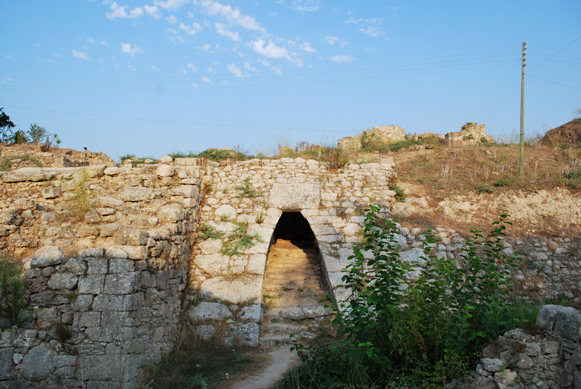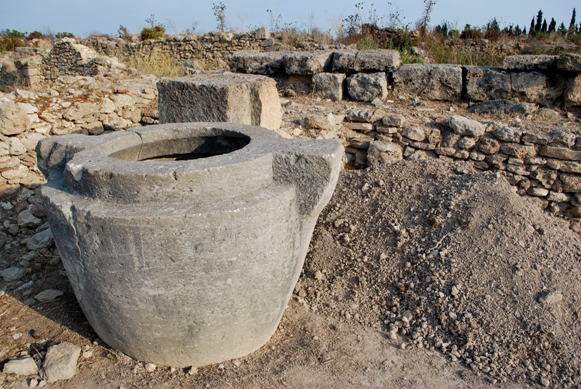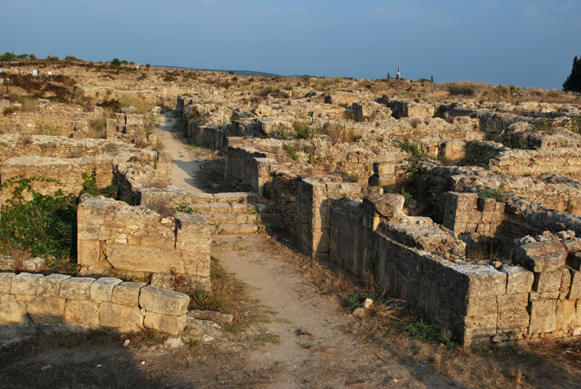<<Ugarit prende posto accanto ad Ur e ad Eridu come una delle più antiche città del mondo, con antecedenti preistorici che risalgono al VI millennio a.C.>> Wikipedia

L'entrata della citta'
La civilta’ di Ugarit invento’ il primo alfabeto semplificato del mondo, passando da centinaia di segni (quello sumero) ad una trentina.

Resti di Ugarit
Vorrei far notare che:
<<Dall’alfabeto ugaritico, sviluppato dagli scribi intorno al XIV secolo a.C., derivano la maggior parte degli alfabeti moderni (greci, latini, etruschi, ebrei, arabi). Dopo la distruzione ad opera dei Popoli del mare, intorno al 1200 a.C., la scrittura ugaritica cessò di essere usata ma l’alfabeto trasformatosi in quello conosciuto come alfabeto fenicio si diffuse, col successo a tutti noto.>>
Wikipedia
Della antica capitale restano solo le basi di case, templi ed edifici pubblici. Mentre i reperti sono presenti nei vari musei siriani (Aleppo, Damasco, Latakia, etc…)

Rovine della antica citta'
<<Excavations have since revealed an important city that takes its place alongside Ur and Eridu as a cradle of urban culture, with a prehistory reaching back to ca. 6000 BC>> Wikipedia

City entrance
Ugarit civilization invented the first simplified alphabet, passing from hundreds of signs (of the sumerian one) to thirty.

Ugarit rests
<<The Ugaritic language, discovered by French archaeologists in 1928, is known only in the form of writings found in the lost city of Ugarit (modern Ras Shamra), Syria. It has been used by scholars of the Old Testament to clarify Biblical Hebrew texts and has revealed ways in which ancient Israelite culture finds parallels in the neighboring cultures.
Ugaritic was “the greatest literary discovery from antiquity since the deciphering of the Egyptian hieroglyphs and Mesopotamian cuneiform”. Literary texts discovered at Ugarit include the Legend of Keret, the Aqhat Epic (or Legend of Danel), the Myth of Baal-Aliyan, and the Death of Baal—the latter two are also collectively known as the Baal Cycle—all revealing a Canaanite religion.
The Ugaritic language is attested in texts from the 14th through the 12th century BCE. The city was destroyed in 1180–1170 BCE>>
Wikipedia
Of the ancient capital there are only houses, temples and public building basements. Findings are showed in various museums (Aleppo, Damascus, Latakia, etc…)

Ruins of the ancient city











